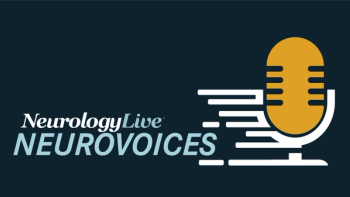
Controlled Trial Highlights Therapeutic Benefits of Subthalamic Nucleus as a Target for Isolated Dystonia
Key Takeaways
- The RELAX trial demonstrated that STN-DBS and GPi-DBS are effective for treating isolated dystonia, with comparable motor symptom improvements.
- Significant improvements in BFMDRS-M scores and quality of life measures were observed over three years in patients receiving neurostimulation.
A groundbreaking trial reveals that subthalamic deep brain stimulation effectively treats isolated dystonia, showing significant long-term motor and mental health improvements.
Findings from the randomized, double-blind, 3-year RELAX controlled trial (NCT03017586) testing various deep brain stimulation (DBS) approaches revealed that targeting the subthalamic nucleus (STN-DBS) is an appropriate and effective method to treat isolated dystonia. In addition, the study found that STN-DBS and internal globus pallidus-DBS (GPi-DBS) achieved comparable therapeutic effects on motor symptoms, further supporting both targets in the treatment of dystonia.1
The randomized trial comprised 67 patients with isolated dystonia from China who were randomly assigned to undergo GPi-DBS or STN-DBS, followed by randomization to either neurostimulation (n = 35) or sham (n = 32) for 3 months. At the 3-month follow-up neurostimulation was also initiated in the sham group, and all patients were followed up for more than 3 years after treatment.
Led by Xinhua Wan, Department of Neurology, Peking Union Medical College Hospital, China, changes in the primary outcome of Burke-Fahn-Marsden Dystonia Rating Scale movement (BFMDRS-MR) score were significantly improved in the STN group who received neurostimulation after 3 months (P <.001). Notably, this group outperformed the sham stimulation subgroup at this follow-up time point (P = .028). For those on neurostimulation, specific treatment effects were observed on facial (mean difference, 1.75; 95% CI, 0.43-3.07; t = 2.72; P = .012) and axial dystonia (mean difference, 3.57; 95% CI, 0.04-7.1; median difference, 0.75; 95% CI, 0.25-5.75; W = 153; P = .023).
When comparing the 2 groups, those who received neurostimulation showed improvements in SF-36 physical health and mental health subscales whereas those who did not demonstrated no significant changes. The neurostimulation group also showed significant improvements in BDI scores by a mean difference of 5.59 (P = .007) at the 6-month post-treatment follow-up, while those not assigned to neurostimulation showed no significant change (mean difference, 2.0; P = .344).
At the 3-year follow-up, significant improvements were observed in the BFMDRS-M scores (mean difference, 27.44; P <.001) and BFMDRS-D scores for all patients receiving STN-DBS compared with baseline (mean difference, 4.87; P <.001). At this time point, this total BFMDRS-M score within the STN group improved by 27.44 (±21.23) points, with patients in the GPi-DBS control group also showing significant long-term improvements. Of the 67 enrolled patients, 29 had a positive response–defined as a BFMDRS-M score improvement of more than 25%–at the 3-month follow-up (43.28%), 53 at the 6-month follow-up (79.10%), and 60 at the 3-year follow-up (89.55%).
After at least 3 years of STN-DBS treatment, patients showed an improved, but non-significant trend in the mental health component of the SF-36, with a mean difference of –7.86 (P = .077) from baseline. No significant changes were observed in cognition, recorded through the Mini-Mental State Exam. Similar to the STN-DBS group, those on GPi-DBS demonstrated significant improvements in most secondary outcomes at both follow-ups, except for pain severity and cognitive function.
When comparing the STN-DBS and GPi-DBS groups, there was no difference in 3-year BFMDRS-D scores between the cohorts, as shown by a mean difference of 0.79 (95% CI, –1.17 to 2.74; P = .869). This trend continued at the 6-month and 3-year follow-ups for SF-36 scores, as well as for cognition, where there were no between-group differences observed at the 3-year follow-up. Notably, investigators found that GPi-DBS requires higher stimulation currents to reach a stable state compared with STN-DBS (GPi: 3.17 [±0.84] vs STN: 2.44 [±0.69] V), indicating a substantially longer battery life for the former group.
This study represented the first double-blind, randomized controlled trial testing STN-DBS for the treatment of isolated dystonia. It also was the first instance of a prospective trial testing STN-DBS and GPi-DBS using post-hoc analysis. Overall, the post-hoc analysis provided significant evidence for the selection of DBS treatment targets for isolated dystonia.
REFERENCE
1. Wang L, Shang H, Jin L, et al. Subthalamic deep brain stimulation in isolated generalised or segmental dystonia (RELAX Study): a multicentre, randomised, double-blind, controlled trial. Neurol, Neurosurg, & Psych. Published online June 6, 2025. doi:10.1136/jnnp-2025-335829
Newsletter
Keep your finger on the pulse of neurology—subscribe to NeurologyLive for expert interviews, new data, and breakthrough treatment updates.


































